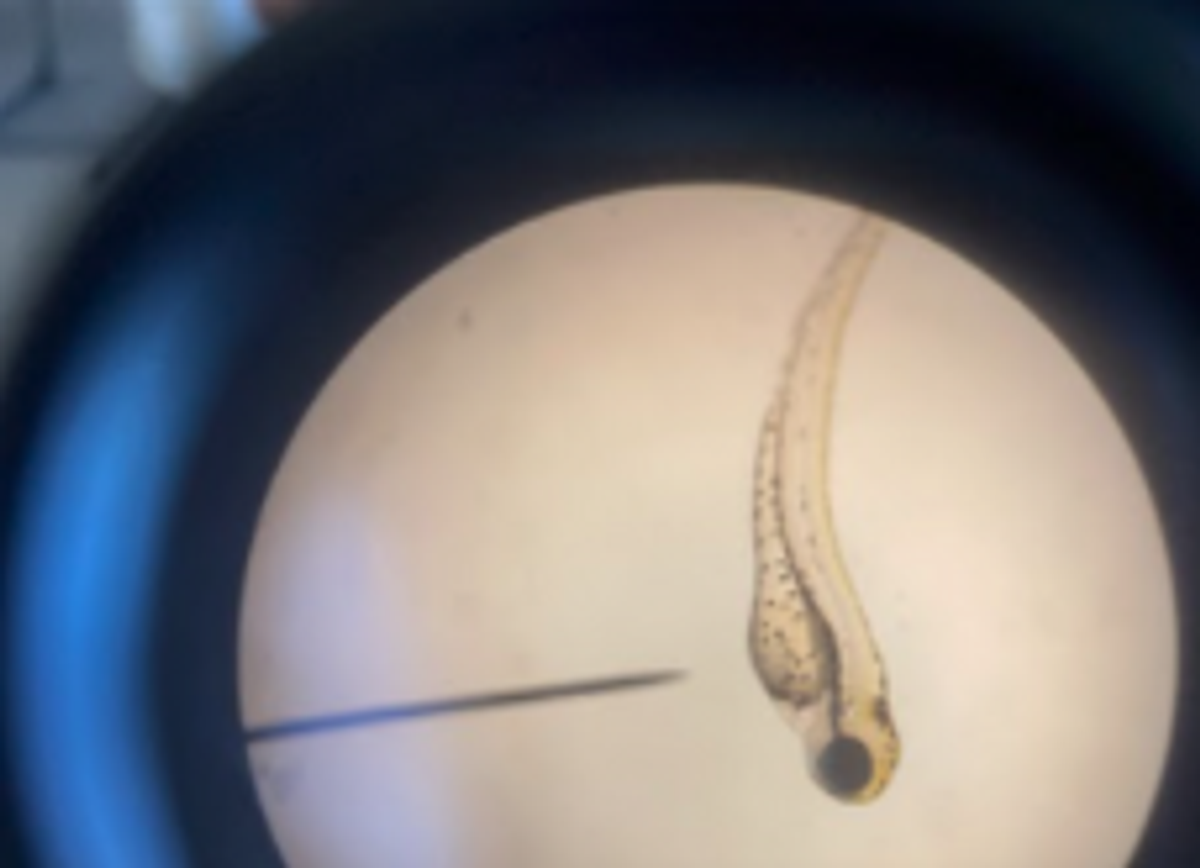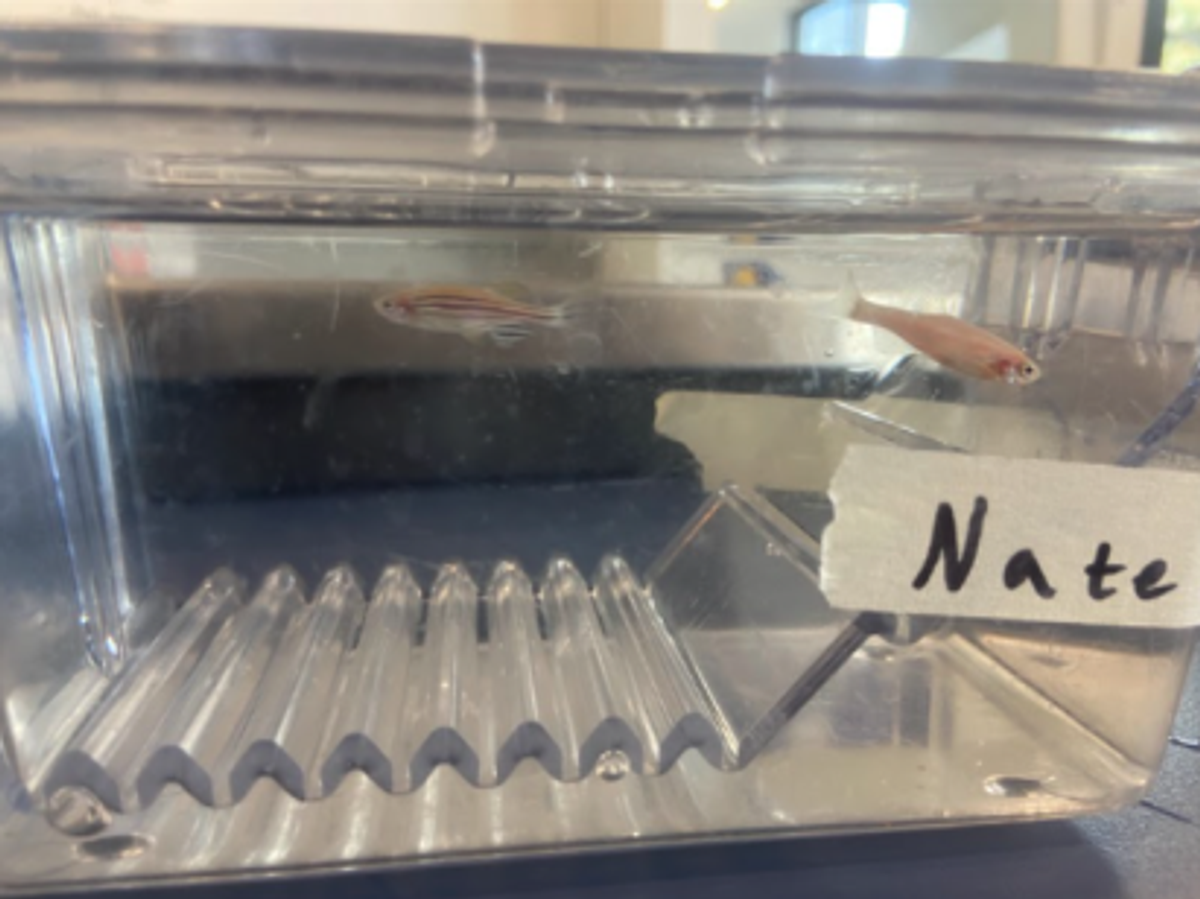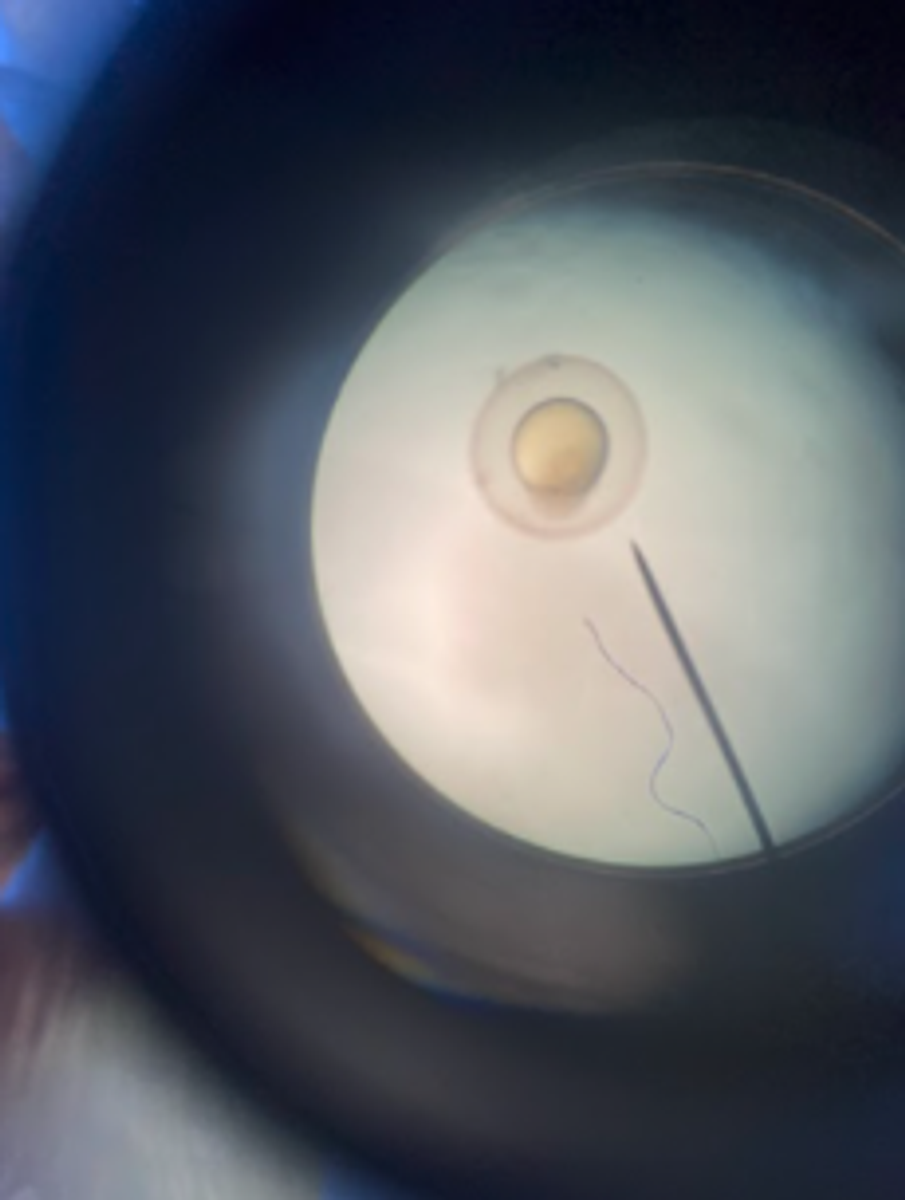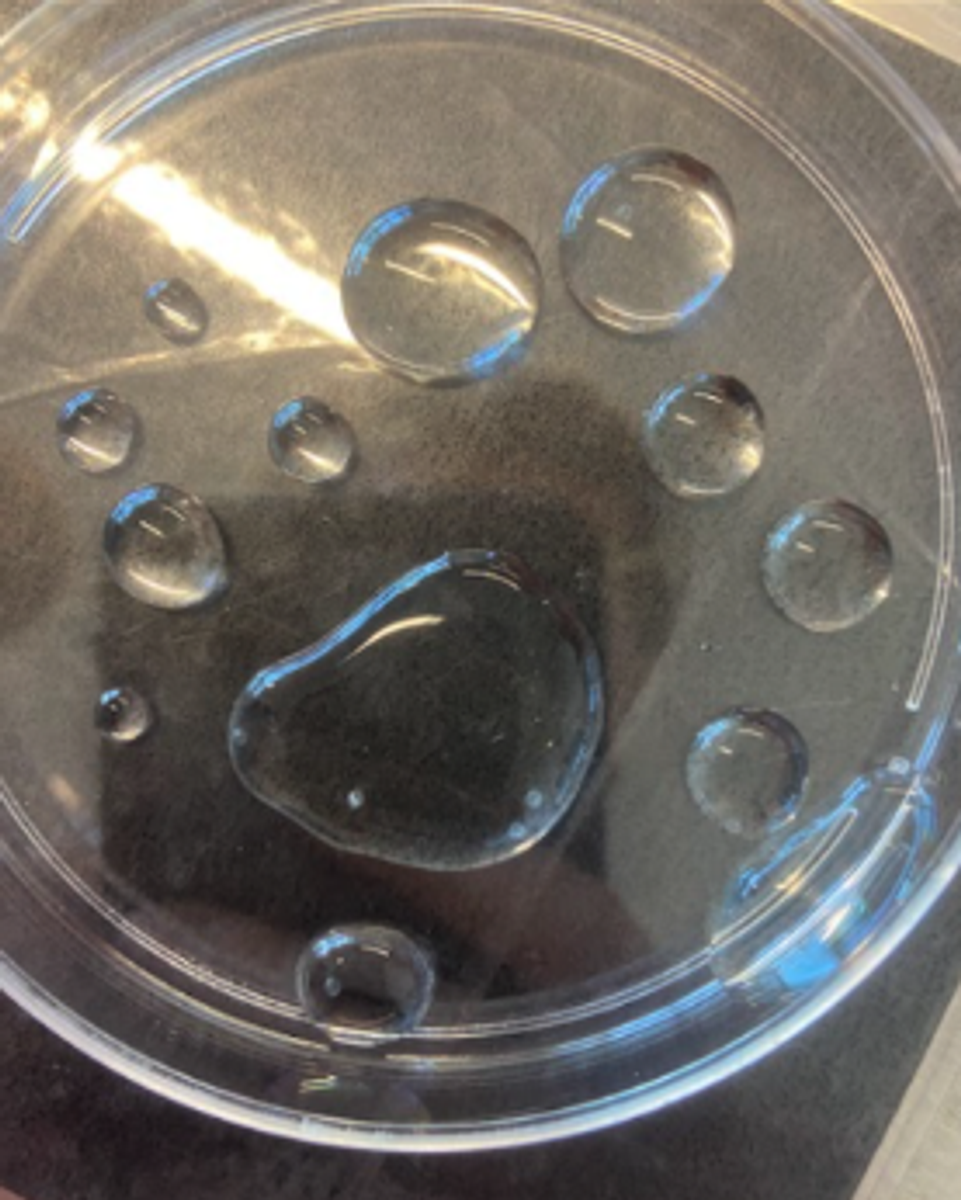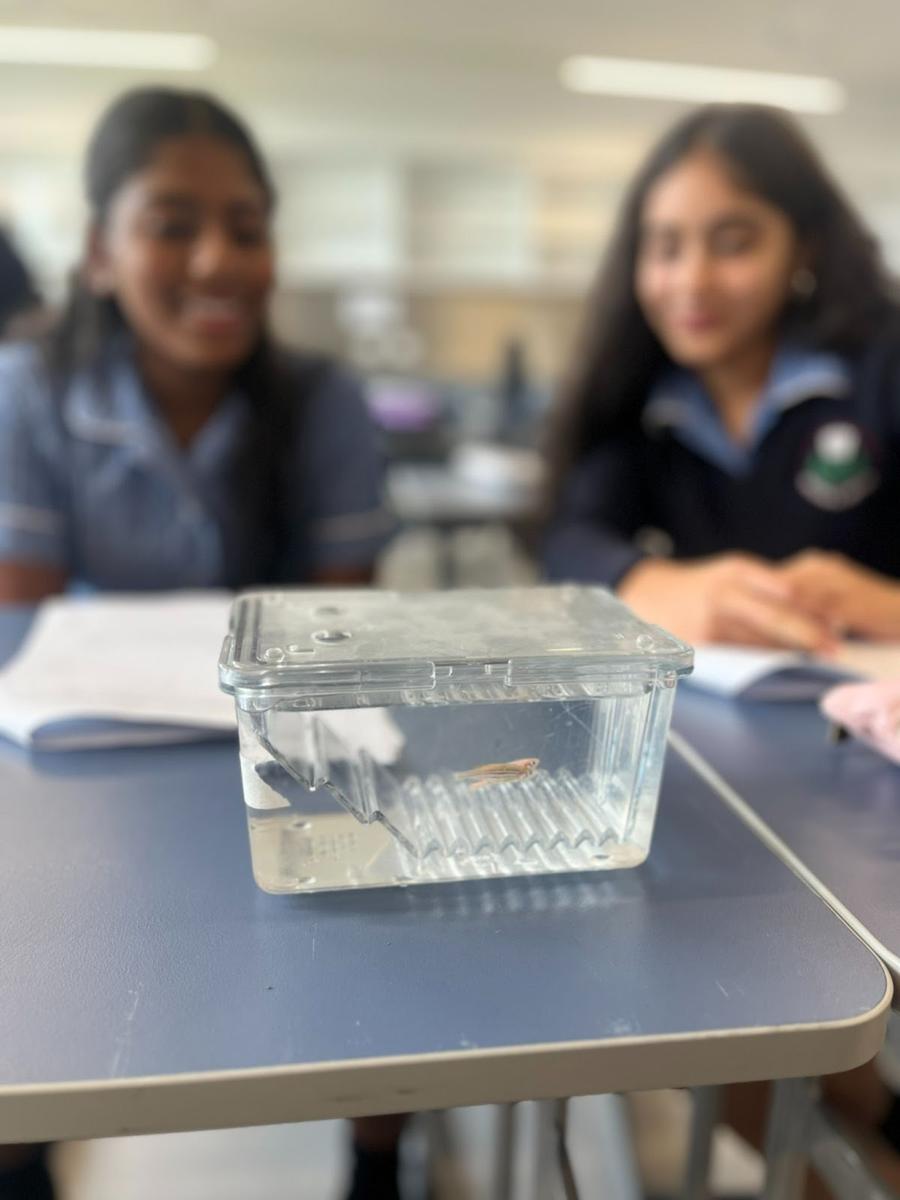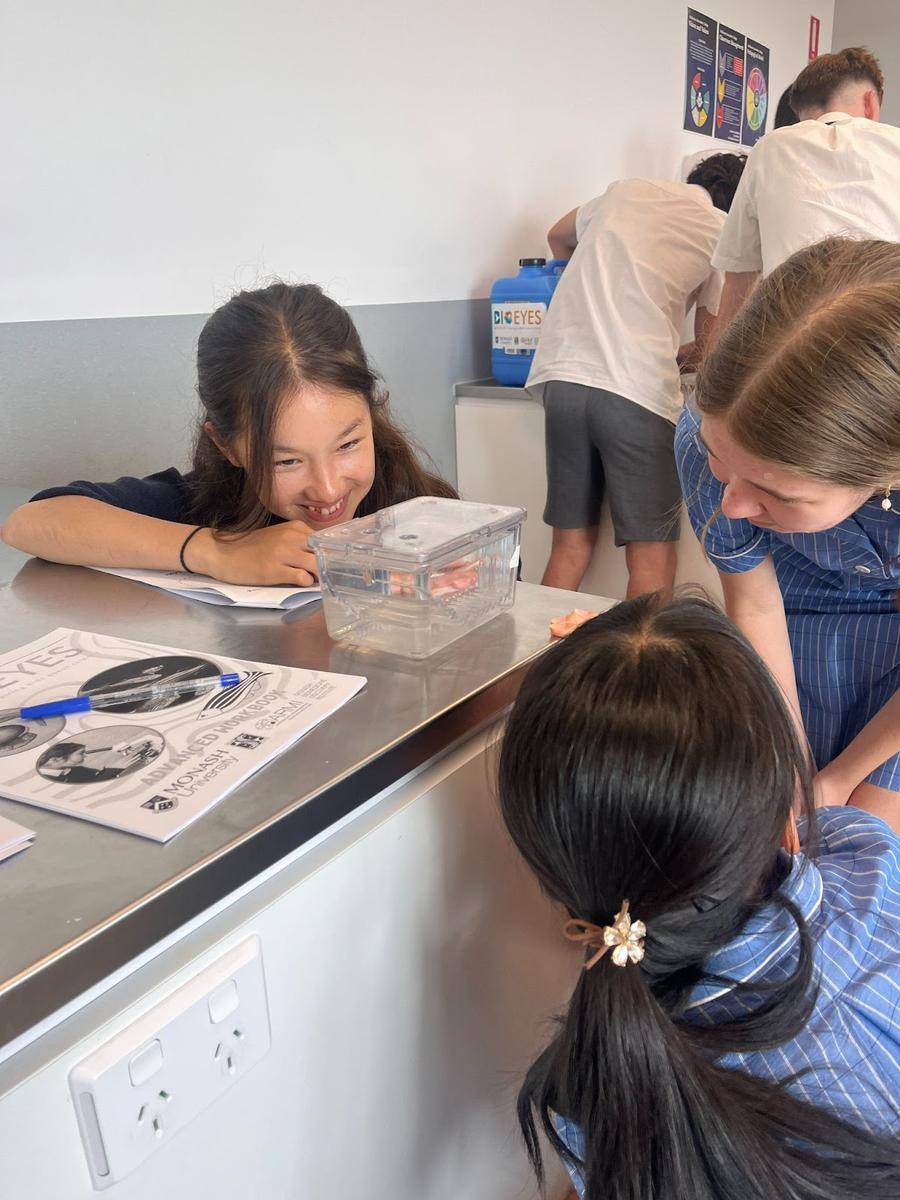SCIENCE
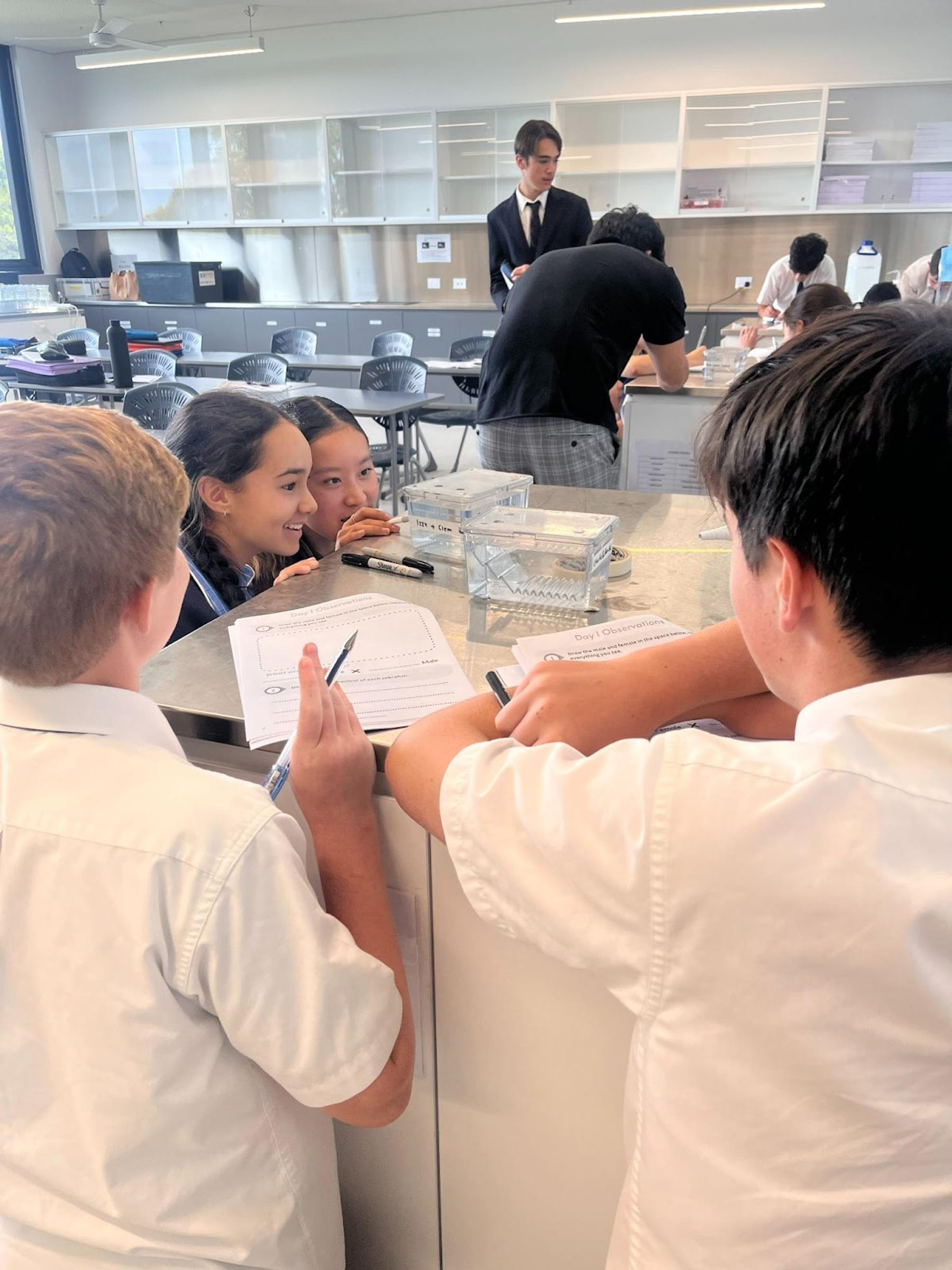
YEAR 9 ELMS ZEBRAFISH INQUIRY
Zebrafish are amazing creatures. They have helped in medical science with their amazing bodies and awesome genes. Their eggs are transparent, which means scientists can observe them in their embryonic stages without hurting them. They are able to regrow their hearts and spinal cord, which us humans can’t do. They share 70-80% of their DNA with us which makes research more likely to be correct. Zebrafish are amazing creatures and we are so privileged to get to do this program.
In the first lesson, we got into our groups, got our fish and learned a bit about them. We got 1 wildtype female and 1 Nacre male. This meant that the female had stripes and had a lot of pigment, while the male was a pinky/peach colour and only had pigment in its eyes. We were given tanks, and then filled it up with water that had a different pH to tap water. What happens overnight is the male chases the female, who produces eggs. The male then drops sperm and fertilises the eggs. We did not see this happen.
In the second lesson, we were given eggs that some of our fish produced. The fish were put back in tanks to be back in the lab. With pipettes we picked up some fish eggs. We could only pick up the clear ones though because the white ones were dead or not fertilised. This meant it would infect our others or get mouldy. That would kill our other eggs. We looked under our microscopes and looked at what was going to be our zebrafish. What happened was, connected to the yolk, there were a bunch of dots. Those were stem cells.
Embryonic stem cells (since the baby fish were in the embryonic stages) can transform into any cell. For instance, one cell could be made into the liver and another, the heart. Adult stem cells however, can only be made into what it is close to. For instance, an adult stem cell in the heart would only transform into a blood cell or a heart tissue cell.
We looked at our eggs and the stem cells for a while. We could do this because zebrafish eggs are transparent. This is one of the many reasons why scientists use them. They are useful in developmental biology (studying how animals grow in the womb) because you can clearly see how they are developing without needing to cut open the eggs.
The lesson we had without the facilitators meant we got to see the embryos at the segmentation stage. This meant they were worm-like and curled around the yolk of the egg. This was very interesting and meant we got to see two of the three stages of zebrafish embryos.
The last day we got to see the baby zebrafish outside their embryos. They had a similar shape to tadpoles. They had a heart and spine and we could see the blood vessels. This was amazing. My group had a special fish that had a heart condition. Its heart was swollen to be twice the size of a normal zebrafish heart. We could also, finally observe which fish were nacre (uncoloured) and which were wildtype (striped). We eventually determined that the wildtype gene was the dominant gene since more fish were wildtype. We then said goodbye to our zebrafish.
Lia Erlich Year 9
SCIENCE TALENT SEARCH 2024
The Science faculty are inviting students to participate in the Science Talent Search (STS). STS is an annual competition that aims to challenge and reward students with an interest in Science. In previous years McKinnon students have had enormous success, winning bursaries up to $150 each.
This years theme:
Species Survival : More than just sustainability
This is a suggestion for your project, while you are encouraged to use it, it is not a requirement (except for Creative Writing and Poster Categories).
Students can enter individually or in pairs. There is a small cost associated with each entry.
Categories are:
- Computer Programming/Games and Simulations
- Photography
- Creative Writing
- Videos
- Inventions
- Experimental Research
- Working Models
- Posters/Scientific wall charts
See link below for more categories and information. (To access the link you will need a McKinnon email.)
Science Talent Search Category Information
Email Ms Sweeney or Dr Fleming for more information or to register your interest.
Thérèse Sweeney
Chemistry and Science Teacher

